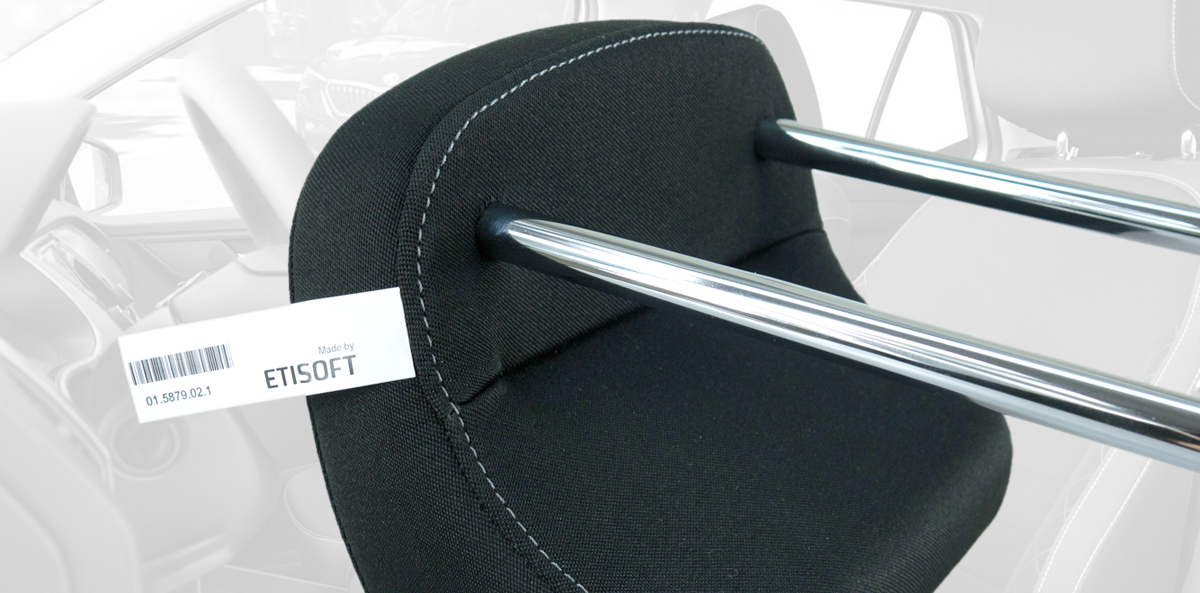
Sew-in labels and information, identification, and product labels
Popular clothing labels perform plenty of functions at each stage of the “life” of the product. From the end user’s perspective, the most important is the composition, size, and washing, cleaning or maintenance instructions when products other than clothing are labelled. At the production stage, they play the role of identification labels. They are a source of information in traceability processes, and labels with codes such as EAN13 facilitate sales processes. The products marked with sew-in labels are not only products of the textile, clothing, or footwear industry, although due to their popularity they are most frequently associated with them. Sew-in labels are also used to mark upholstered furniture, mattresses, bedding and as identification markings in the automotive industry where they are usually invisible.
Sew-in labels made with various technologies
The clothing industry, like every B2C industry, is governed by special laws, and the right labelling and brand exposure in many cases have an impact on consumers’ purchasing decisions. Depending on the needs and legal requirements, various solutions are applied. Frequently we can find sew-in labels made with various technologies on a single product. One of the solutions are jacquard woven labels with a permanent overprint, most commonly with the manufacturer’s logo or name. Their task is to display the brand of the product. They are typical marketing labels which sewn in in discreet places continuously emphasise the value of a given collection. Specialised service providers usually carry out the production of such labels.
A wide range of consumables for thermal transfer printers which have been designed with printing of identification, information and product sew-in labels in the textile and clothing industry in mind resulted in the fact that this printing technology currently dominates also in this industry. In addition to that, just-in-time printing has made it possible to use such labels in manufacturers’ internal quality systems.
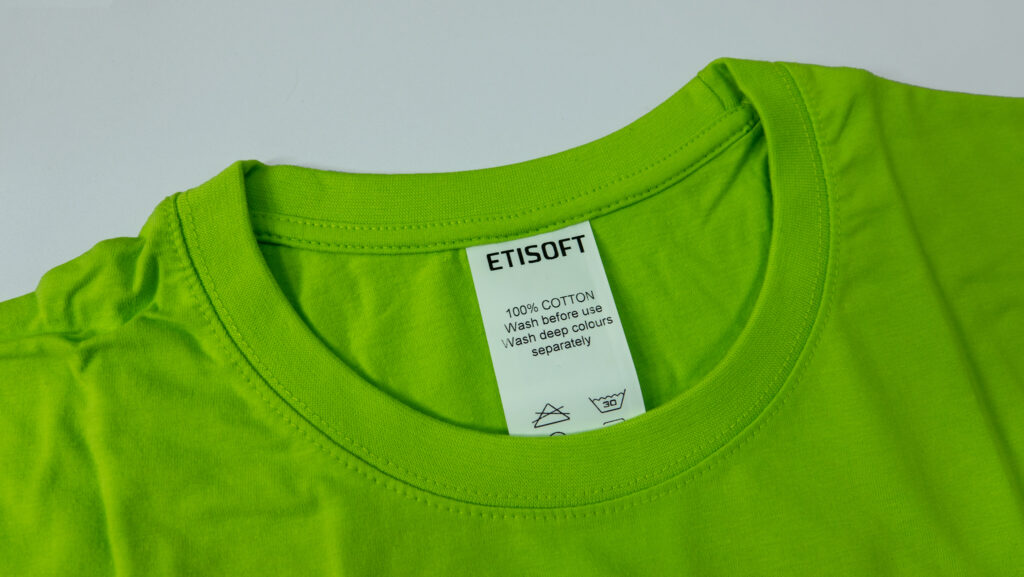
Upholstered furniture, mattresses, bedding, cushions for garden furniture are other, although certainly not all products where sew-in labels are used for their identification. Perhaps, in contrast to clothing, they contain more information and details. In many cases the information contained in them is required by law.
Due to their size, they can be printed with the use of flexographic or digital technology. The products prepared in such way are very often used by manufacturers of mattresses.
Fabrics used for label printing in the clothing and light industry:
- Nylon is most used for printing information about the product and sew-in labels that contain washing and ironing instructions. It is characterised by a smooth surface, which makes it suitable for printing of bar codes such as EAN.
Example of product:
- e-9021 – nylon and the so-called polyester taffeta
- possibility to print on both sides of the fabric
- resistance to washing, ironing, and dry-cleaning
- it is OEKOTEX Standard 100 certified
- dedicated thermal transfer ribbon Graphite Resin-TX.
2. Satin is a “soft” fabric which predisposes it to mark underwear, children’s clothing, and other products in direct contact with our bodies. Like nylon, satin is used for printing labels and essential information about the product. Due to its structure, it is not preferred for printing bar codes.
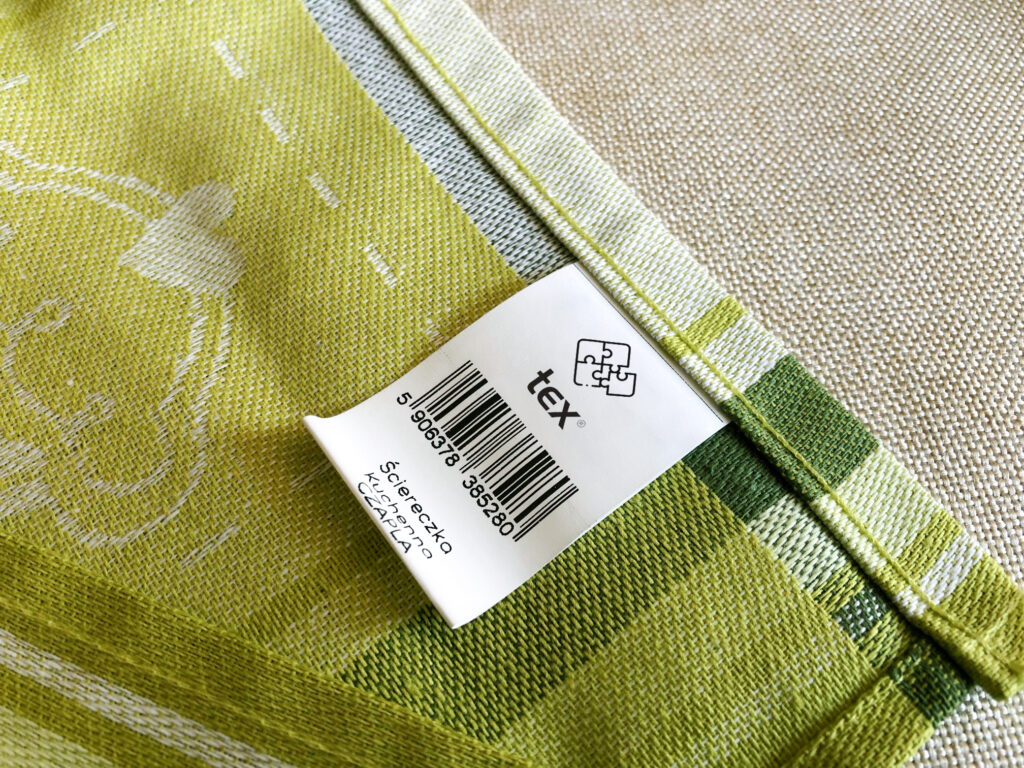
Example of product:
E-9031 – polyester satin
- possibility to print on both sides of the fabric
- resistance to washing, ironing, and dry-cleaning
- it is OEKOTEX Standard 100 certified
- dedicated thermal transfer ribbon Graphite Resin-TX.
Product marking with sew-in labels in the automotive industry
Quality standards in the automotive industry and the need for full traceability of each car component also require manufacturers of upholstered components, e.g., car seats, to label them in a proper way and in compliance with industry standards. Unlike sew-in labels used in the clothing industry, sew-in labels used for marking e.g., car seat covers must comply with the flammability standard, whereas the print must ensure product identification throughout the life of the vehicle.
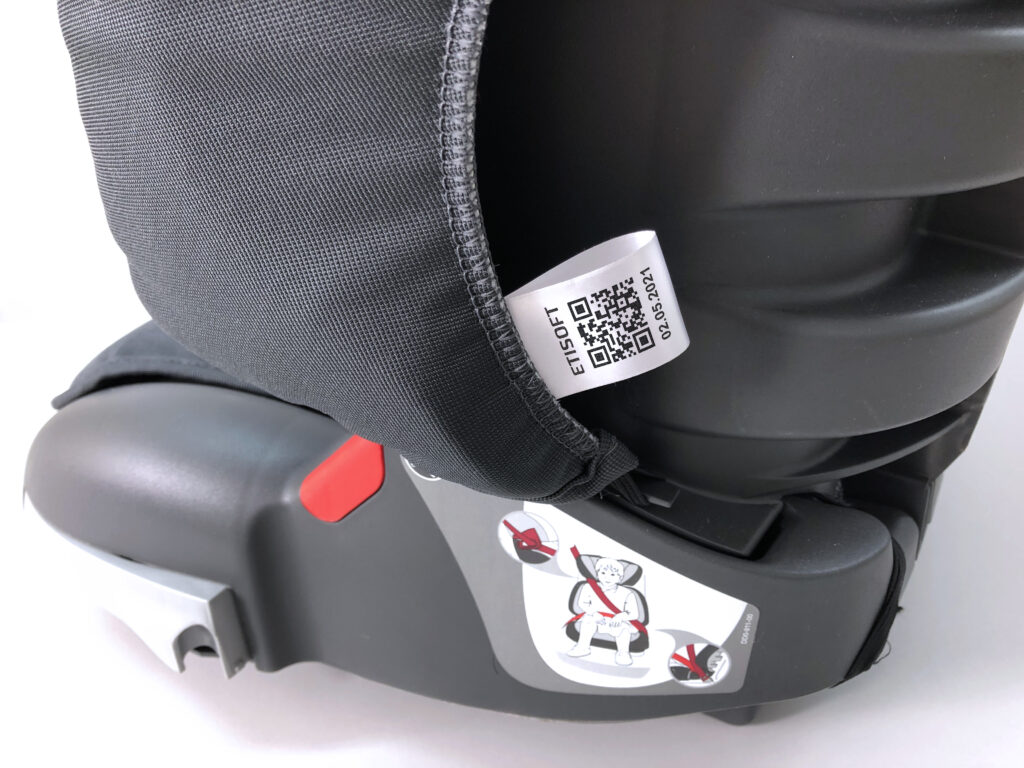
Nylon and polyester sew-in labels are most frequently used in the automotive industry. White sew-in labels are used for product identification markings and they are usually hidden inside the seats. They are an important element in internal quality and traceability processes. Black sew-in labels can be found in cars, e.g., on seat belts. White thermal transfer ribbons are most frequently used to print them.
Example of product:
e-9016 – nylon, the so-called white polyester taffeta
- possibility to print on both sides of the fabric
- resistance to washing, ironing, and dry-cleaning
- non-flammable fabric (fire retardant)
- dedicated thermal transfer ribbon Graphite Resin-TX.
Sew-in labels with an RFID tag
More and more frequently we can come across products marked with sew-in labels with RFID tags. Markings of this type are currently most common in the automotive industry, but not only. They are sewn in into sports clothing sold by one of the popular sports equipment chains, where such tags are required.
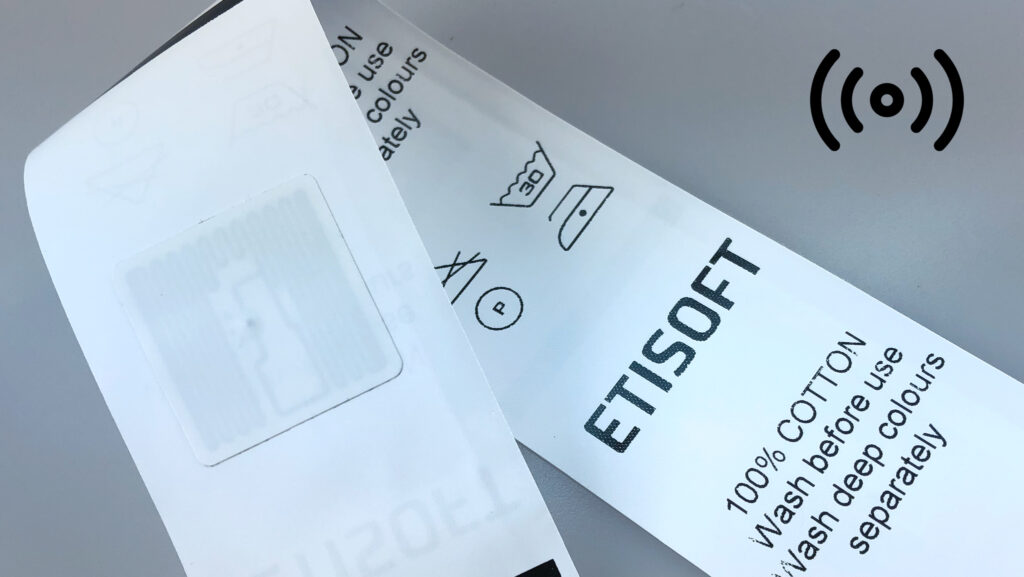
Benefits of using RFID-tagged sew-in labels:
- quick identification process of components in the automotive industry
- quick inventory in points of sale and warehouse
- quick picking and verification.
A wide range of thermal transfer printers to print labels sewn-in into the product, the possibility of using a knife and stacker in more advanced solutions make the process of marking products made of textile materials simple and inexpensive.
